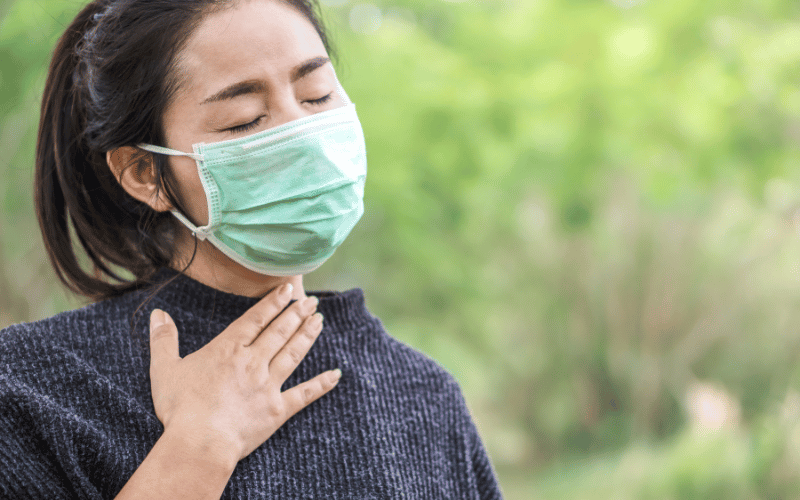Symptom 3: Breathlessness

Breathlessness, or dyspnea, in bronchiectasis is a symptom that progressively worsens as the disease advances. Initially mild and occurring mainly during physical exertion, it can become more persistent and severe over time. This symptom arises from the reduced capacity of the damaged airways to facilitate normal breathing.
The feeling of being unable to catch one’s breath significantly limits physical capabilities. Activities that were once easy, like climbing stairs or walking, become challenging tasks. This limitation on physical abilities can lead to a sedentary lifestyle, further impacting overall health and well-being.
Beyond the physical limitations, breathlessness can also have psychological effects. The constant struggle to breathe can lead to anxiety and fear, especially during episodes of acute breathlessness. This can create a cycle of anxiety and breathlessness, where the fear of an episode can exacerbate the symptom.
Managing breathlessness involves a combination of medication, breathing exercises, and lifestyle modifications. Pulmonary rehabilitation programs, which include exercise and education, are effective in improving breathing efficiency and reducing the severity of the symptom. Oxygen therapy may be required in severe cases to ensure adequate oxygen levels in the blood.
Adapting to life with breathlessness requires patience and perseverance. While this symptom can be challenging, with the right strategies and support, individuals can lead active and fulfilling lives. It’s important to recognize and address this symptom early, as effective management can significantly reduce its impact on daily life. (3)